
A transmission line can be approximated by a distributed-parameter network with the circuit parameters distributed throughout the line. One line segment with the length D z can be approximated with an electric circuit as in the following figure:

Figure 6 Equivalent circuit of an element of a transmission line with a length of D z
Note that this model is actually for an unbalanced line but the model for a balanced line is the same except for R and L which is divided symmetrically on both conductors with R/2 and L/2 both on the upper conductor and the lower conductor in Figure 6. This lossy transmission line model is described by four lumped parameters, which will be derived later in this section:
where R and G is zero under loss less conditions. We will also derive the propagation constant and the characteristic impedance in this section.
To derive the parameters we begin by using Kirchhoff´s voltage law on the circuit in Figure 6:
Equation 49 |
which can be written as:
Equation 50 |
and then letting D z ® 0 we get:
Then we have one equation containing R and L. To get another equation relating G and C we apply Kirchhoff´s current law on the circuit and get:
Equation 52 |
and letting D z ® 0 in this equation also we get:
The first order partial differential equations, Equation 51 and Equation 53, are called the general transmission line equations. These equations can be simplified if the voltage v(z,t) and the current i(z,t) are time-harmonic cosine functions:
Using Equation 54 and Equation 55, the general transmission line equations in Equation 51 and Equation 53 can be written as:
These equations are called the time-harmonic transmission line equations. These equations (Equation 56 and Equation 57) can be used to derive the propagation constant and the characteristic impedance of the line. By combining Equation 56 and Equation 57 we get:
where g is the propagation constant:
The real part, a , of the propagation constant is called the attenuation constant in Np/m and the imaginary part, b , is called the phase constant of the line in rad/m. In a transmission line the series resistance of the conductors are so low that it can be neglected in the computation of the propagation constant. Equation 60 can then be simplified to:
 |
The solution of Equation 58 and Equation 59 is:
where the two terms in each equation denotes traveling waves in positive and negative direction along z respectively. The characteristic impedance of a transmission line is the ratio between the voltage and the current for an infinitely long line. For an infinitely long line with the source at the left end there are no reflecting waves so only the waves traveling in the positive z direction exist (only V+ and I+ in Equation 62 and Equation 63). Using Equation 56 and Equation 57 the characteristic impedance can be written as:
Note that it is independent of z.
If the distance D between the two wires is much greater than the radius, a, of a conductor, the capacitance per unit length, C, can be written as:
 [F/m] [F/m] |
And then by comparing Equation 61 with the propagation constant for a transverse electromagnetic wave in a medium with the constitutive parameters m , e and s written as:
 [m-1] [m-1] |
Equation 66 |
and assuming that the following relationship is known:
we get:
Using Equation 67 and Equation 68 we can get L and G for the transmission line from Equation 65:
and
 [S/m] [S/m] |
To derive the series resistance R we look at the ohmic power dissipated per unit length of both conductors. Assuming the surface current Js to flow in a very thin surface layer and to be uniform over the circumference of both conductors the current in each conductor is then:
Since copper, and other materials used in transmission lines, are good conductors (i.e. s c >> w Î c) and the radius a is much larger than the skin depth the above assumptions will hold for transmission lines and then the surface impedance can then be written as the intrinsic impedance, h c, of a good conductor:
 [W ] [W ] |
Equation 72 |
The dissipated power per unit length, ps , assuming the presence of a non-vanishing axial electric field at the surface, will then be:
Equation 73 |
Using Equation 71 the total ohmic power dissipated in a unit length of the line (in both conductors) will then be:
Equation 74 |
The series resistance per unit length is then:
 [W /m] [W /m] |
where the parameters m c and s c is that of the material in the conductors. The real part of the surface impedance, Rs, is calculated as:
 [W ] [W ] |
Equation 76 |
Having the distance, D, between the conductors and the radius, a, of the conductors, the characteristic impedance from Equation 64 can be simplified using Equation 65, Equation 69, Equation 70 and Equation 75 into:
Equation 77 |
It can also be shown that for a balanced pair of wires near ground the characteristic impedance will also depend on the height over ground, h, as:
 [W ] [W ] |
Equation 78 |
The derived equations is collected in the following table:
Table 4 Basic transmission line equations
Description |
Parameter |
Equation |
Unit |
| Resistance | R |
|
W /m |
| Inductance | L |
|
H/m |
| Conductance | G |
|
S/m |
| Capacitance | C |
|
F/m |
| Characteristic Impedance | Z0 |
|
W |
| Characteristic Impedance (simplified) | Z0 |
|
W |
| Characteristic Impedance (at height h above ground) |
Z0 |
|
W |
| Propagation Constant | g |
|
m-1 |
In an infinitely long line there are only forward traveling waves and no reflected waves. The second term in Equation 62 and Equation 63 will be zero. This is however also true for a line terminated with its characteristic impedance. A line is called a matched line when the load impedance is equal to the characteristic impedance. If we consider a line with the characteristic impedance Z0, a propagation constant g and with the length l terminated with a load impedance ZL connected to a sinusoidal voltage source, and then the voltage and current distribution on the line can be calculated as:
where z´ = l-z is the distance measured backward from the load. These equations are derived from Equation 62 and Equation 63 by looking at z=0 and z=l. These equations are solved using the fact that:
Equation 81 |
and then using the hyperbolic functions to simplify. Having the voltage and current distribution the input impedance, Zi, can be calculated, which is the impedance that the source sees at z = 0 or z´= l:
Notice that when ZL equals Z0 the input impedance will be equal to the characteristic impedance. So the voltage source only sees an impedance Zi and the input current, Ii. The voltage, Vi, can then easily be calculated from the source voltage, Vg, and the internal impedance of the source Zg as:
Equation 83 |
|
Equation 84 |
Note that if the line is matched, Equation 79 and Equation 80 reduces to:
Equation 85 |
|
Equation 86 |
This means that the voltage and current distribution on a matched line are exactly the same as though the line has been extended to infinity.
The average input power delivered by the source can then be calculated as:
Equation 87 |
where * denotes the complex conjugate. The average power delivered to the load is calculated as:
 |
Equation 88 |
In the area of telecommunication the absolute power is often measured in dBm. That is the power in decibel, with the reference power one milliwatt.
 |
Equation 89 |
Where P is the power in milliwatt, V is the circuit voltage in volts and R is the circuit impedance in W across which V is measured. When describing a voltage in decibel, measured in dBu, the reference is said to be the power of 1 mW over 600 W which represents a voltage of 0.775 V. Note that dBm and dBu will be the same if measured over 600 W . If the impedance, Z, is not 600 W , however, the absolute power in dBm can be computed from the measured voltage, U, as:
Equation 90 |
A good balance of the telecommunication line is important for reducing common-mode signals. Common-mode signals are the main cause of the electromagnetic field around an aerial wire since the distance between the conductors in the wire is much less than the distance between the wire and ground. For differential-mode signals the phase difference is 180° and the amplitudes are equal, therefore fields generated by the two conductors will tend to cancel each other.

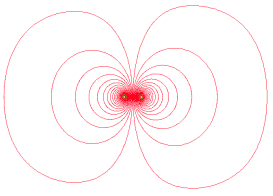
Figure 7 Radiation from common-mode signals and radiation from differential-mode signals.
Figure 7 illustrates simulated radiation from a wire, carrying a common-mode current to the left and a differential-mode current to the right. The magnitudes of the currents were the same and the differences in field strength between the two lines are also the same in both figures. The existing radiation from the line to the right is due to the distance between the conductors.
If the wire is not perfectly balanced a common-mode signal will appear due to introduced differences in amplitude and phase. The effect of this phenomenon can be calculated with the use of the longitudinal conversion loss (LCL). In recommendation G.117 from ITU-T a standardized method is described for determination of LCL [4]. First EL is applied and VT is measured according to the following figure:
Figure 8 Method for measurement of LCL [4]
Then LCL can be calculated as [4]:
 [dB] [dB] |
To see the relation between the longitudinal conversion loss (LCL), as measured in Figure 8, the unbalance of the line and the conversion from differential signals to common-mode signals, we will study a model of a telecommunication line as in the following figure:

Figure 9 Equivalent circuit of equipment and line
where ZC is the source impedance to ground and Z1 + Z2 is the differential mode impedance (normally the termination which is customarily the same as the characteristic impedance of the line). The common-mode impedance is the impedance for the common mode signals to ground, (Z1 in parallel with Z2) + ZL. If the measurement set-up for the LCL-measurements shown in Figure 8 is applied to the line in Figure 9, we get the following equivalent circuit:

Figure 10 Equivalent circuit of the LCL measurement set-up (Figure 8) applied to the telecommunication line in Figure 9.
Then the common-mode current, I, in Figure 10, is given by:
 |
Furthermore the currents, I1 and I2, in each conductor of the line are given by:
The differential mode voltage, VT, can then be expressed as
Combining Equation 92, Equation 93, Equation 94 and Equation 95 and substituting Equation 91 leads to:
 |
Because the differential mode impedance is fixed and the source is perfectly balanced the following assumptions can be made:
We can express the cable unbalance as the difference between the differential impedances Z1 and Z2:
Substituting Equation 97, Equation 98 and Equation 99 in Equation 96 gives the following relation for the longitudinal conversion loss:
 |
Equation 100 |
Finally by assuming a
reasonable balance on the line, ![]() , give the approximation:
, give the approximation:
In the next step of the study this expression is more practical to use than Equation 91. From Equation 101 it can easily be observed that LCL is inversely dependent of the unbalance DZ. In addition larger load impedance to ground, ZL, will increase LCL and thus less current will be converted from differential-mode to common-mode.
To be able to investigate the relationship between differential mode signals and common mode signals a general model in Figure 9 is refined below.
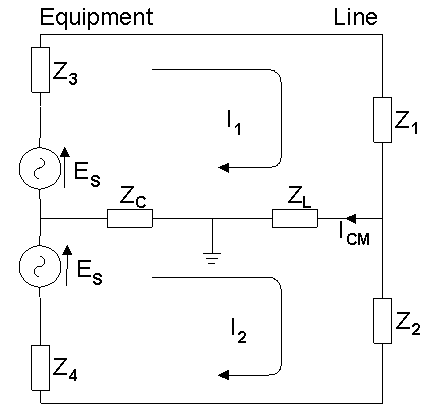
Figure 11 Equivalent circuit of Figure 9 showing differential mode and common mode currents
Note that the signal source is primarily producing a differential signal in this case. By applying Kirchhoff’s voltage law on the equivalent circuit in Figure 11, the following two equations are obtained:
Equation 102 |
|
Equation 103 |
Combining these equations will result in the following common-mode current:
Substituting Equation 97, Equation 98 and Equation 99 in Equation 104 leads to:
 |
Equation 105 |
Assuming that we have a
reasonable balanced line, ![]() , results in:
, results in:
Equation 106 |
or if we instead write this in decibel:
where the factor Q is:
But we want an expression containing the LCL so we rewrite Equation 108 and then use Equation 101 to insert the LCL. Q can then be rewritten as:
 |
Equation 109 |
Substituting the
CM-impedance, which can be written as ![]() , gives:
, gives:
 |
Equation 110 |
For the CM-current in Equation 107 this leads to:
 |
However, if it is the
common mode voltage (VC) that is the wanted variable, ![]() is simply subtracted
from ICM in Equation
111 and we get VC
in dBm V.
is simply subtracted
from ICM in Equation
111 and we get VC
in dBm V.
In most cases this relationship can under some assumptions be simplified, for instance assuming that the line is approximately balanced, i.e. ES in Equation 111 is equal to the logarithmic differential-mode voltage (VD).
Having the longitudinal conversion loss, the common-mode voltage (VC) can then be calculated from the differential-mode voltage (VD) [1]:
Where ZCM is the common-mode impedance and Z0 is the differential-mode impedance. This relation between the differential-mode voltage (VD) and the common-mode voltage (VC) is the most commonly used for calculations on balanced transmission lines.
When the common-mode voltage is known it is possible to estimate the interference field strength (E) by the use of a conversion factor (FAV) from common-mode voltage to an electric field determined at a specified distance from the cable [1].
or if we use the relationship in Equation 112 and replace the common-mode voltage in Equation 113 we get:
Equation 114 |
The relation between LCL and the radiated electric field strength have also been measured [1] (in Figure 12 below) and it have been shown that the radiated field strength is approximately inversely proportional to LCL.
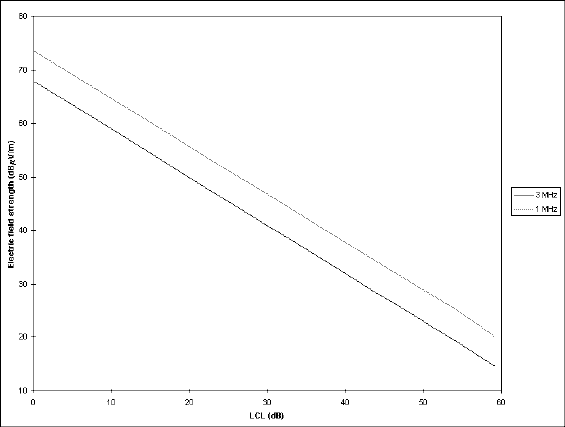
Figure 12 Relationship between LCL of the telecommunication line and the radiated field strength
The conversion from an unbalanced signal from the source to a balanced signal on the line and back to an unbalanced signal again is done with balanced to unbalanced transformers (baluns). There are mainly three kinds of broadband baluns, shown in Figure 13 below.
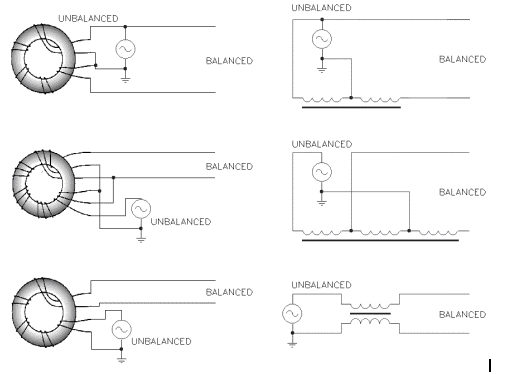
Figure 13 Three different kinds of baluns with their equivalent schematic to the right
These can be divided into two distinct categories. The first two baluns are voltage baluns causing equal and opposite voltages to appear at the two output terminals. The third balun is a current balun, or choke balun, forcing equal and opposite currents to flow on the line. If the line and the terminating load is perfectly symmetrical, the voltage baluns will force the voltages to be equal and opposite and thus the currents flowing from the balun output terminals will be equal and opposite and there will be no CM-current on the line. If, however, the line is not perfectly symmetrical unequal currents, resulting in CM-currents, will appear leading to line radiation.
A solution, that is good in the aspect of reducing line radiation, would be to use a current balun, which makes it possible for opposite currents to flow and rejects CM-currents. Another solution is to use a voltage balun in combination with a current balun. Notice that even if the voltage is perfectly balanced at the ends of the line, some CM-currents will still appear due to non-symmetrical line and load. When using a current balun on a balanced line it will function as a CM-suppressor. The wire is wrapped around a ferrite core as in Figure 13. Then the differential currents of opposite phase will produce magnetic fluxes of opposite phase in the core that cancel each other and there will be no remaining reactance in the core for differential-mode signals. The common-mode current will however produce a magnetic flux that appears as a reactance in series with the line.
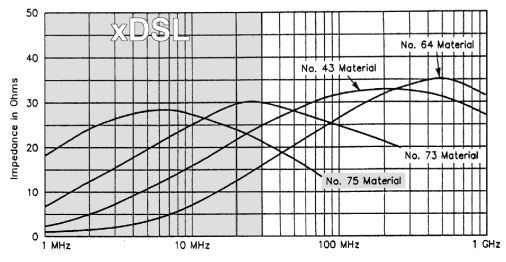
Figure 14 Impedance in different ferrite beads
Ferrite cores are well suited as core material but the characteristic will vary a lot with the frequency and with the ferrite material as shown in Figure 14 above.
Previous: Near-Field and Far-Field | Next: Models
EMC of Telecommunication Lines
A Master Thesis from the Fieldbusters © 1997
Joachim Johansson and Urban Lundgren